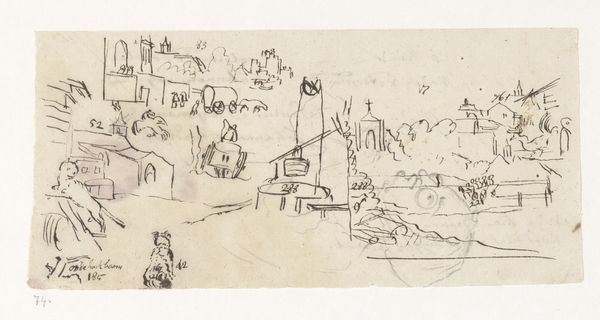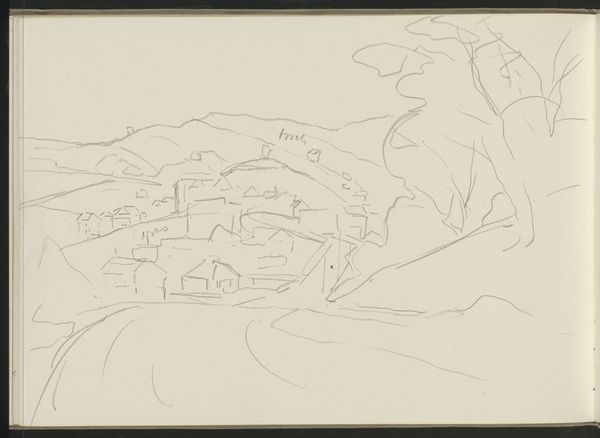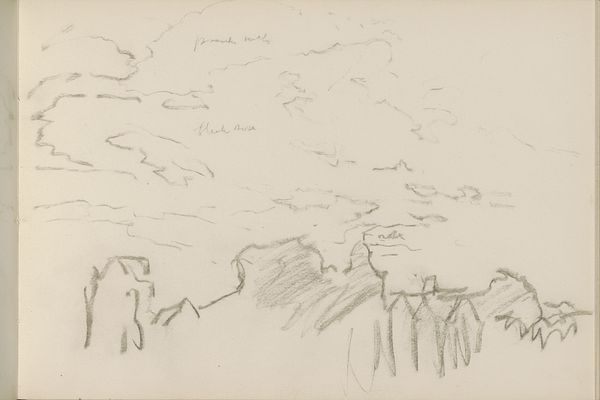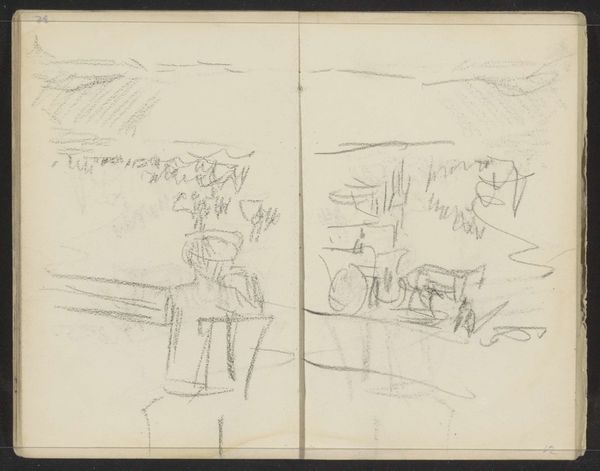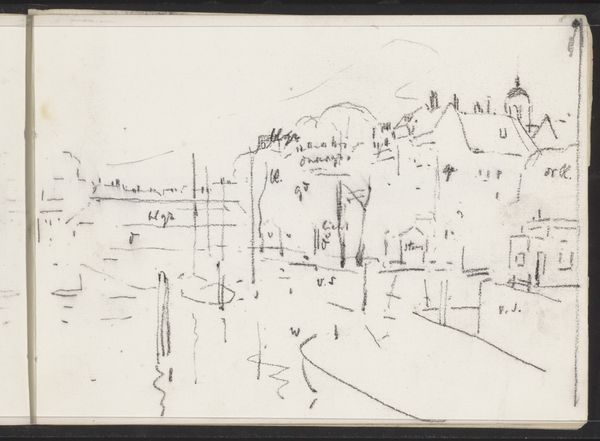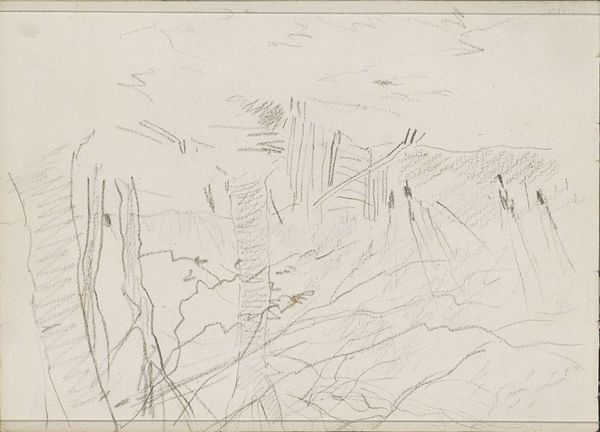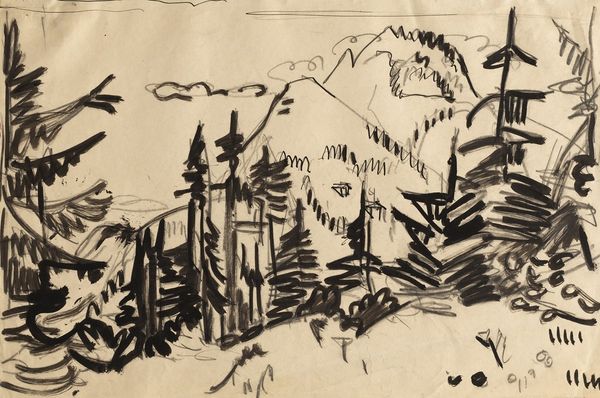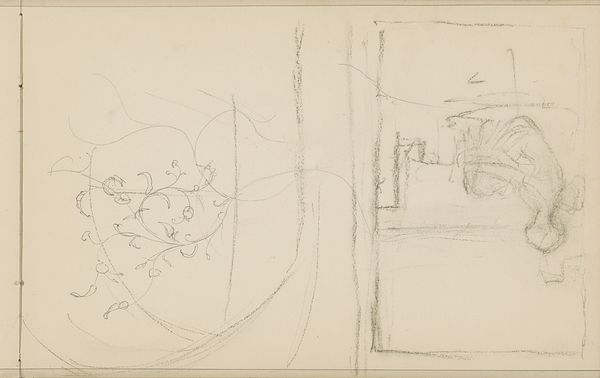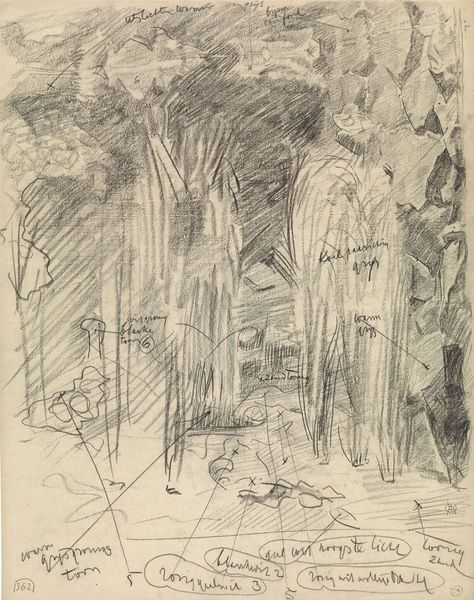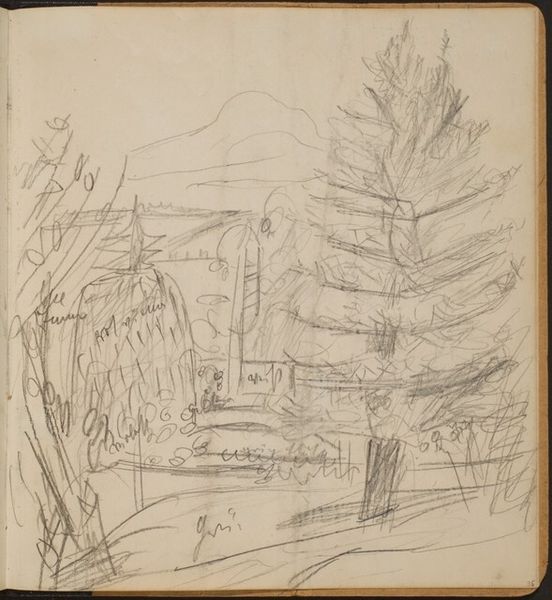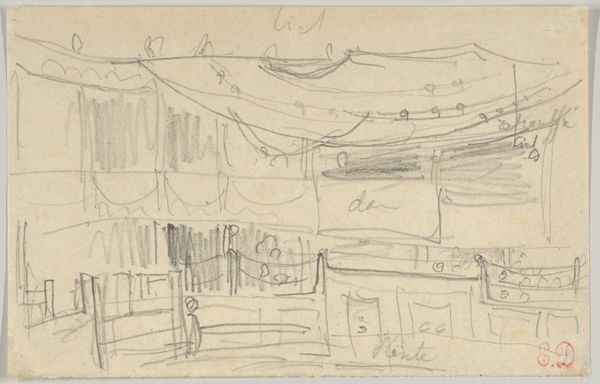
drawing, pencil, architecture
#
drawing
#
landscape
#
pencil
#
expressionism
#
architecture
Dimensions: 4 1/8 x 6 1/8 in. (10.5 x 15.6 cm)
Copyright: Public Domain
August Macke made this pencil drawing, Tunisian View, sometime before his death in 1914. He was part of the German Expressionist group Der Blaue Reiter, whose members sought to express spiritual truths through abstract forms. Here, though, we see a rather traditional landscape, sketched during the artist’s trip to Tunisia with Paul Klee. What might this scene have meant to German artists at the time? The colonial context is crucial. By the early 20th century, Tunisia was a French protectorate. European artists frequently traveled to North Africa, seeking an escape from the industrialized world and a supposedly more authentic experience. Macke’s sketch takes part in this Orientalist tradition. The loose lines and muted tones perhaps reflect a desire to capture the essence of the place, rather than a literal depiction. To understand this work more fully, we can consult travel literature from the period, studies of colonialism, and biographies of the artist. The meaning of any artwork is always shaped by its historical and institutional context.
Comments
No comments
Be the first to comment and join the conversation on the ultimate creative platform.

